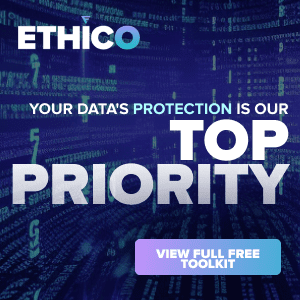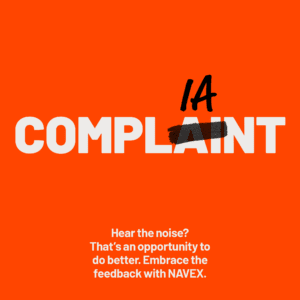Editor’s note: This article has been updated to reflect the SEC’s adoption of final climate disclosure rules.
The SEC has finally approved its long-awaited climate disclosure rules for publicly traded companies. While they’re less stringent than what the agency proposed in 2022, they largely align with the general trend of establishing consistency and reliability when it comes to reporting about climate-related matters. Mallory Thomas, a partner at Baker Tilly, talks about what companies need to know (hint: get comfortable with emissions reporting).
Businesses are experiencing the new reality of managing growth while understanding and mitigating greenhouse gas (GHG) emissions created by their operations. Many regulations centered on climate-related risk and impacts are requiring public and, in some cases, private companies to measure and report climate impacts across their value chain.
The result is middle market companies caught in the crossfire of the Scope 3 indirect emissions reporting by companies within their supply chain regardless of the SEC’s removal of Scope 3 requirements. While the exclusion of Scope 3 reporting may take some pressure off, requirements for climate risk disclosure are likely to impact value chain participants. Under the SEC rule, affected companies will require detailed assessment of material climate-related risks, likely spanning climate impacts on sourcing and supply chain disruptions.
The need for middle market companies to act is clear, understanding carbon accounting, defining those actions and determining how to execute them can be a significant challenge.
Carbon accounting requires collaboration to understand, track, manage and report environmental impacts. This collaborative approach helps companies to identify what data is important, how to collect it, estimations to apply when data is not available and how to understand and report the impact. This transparency also enables emissions reduction initiatives.
Carbon accounting challenges
While an organization can face many challenges that affect its ability to accurately measure and report its carbon footprint, it all boils down to data, talent and task paralysis.
Data wrangling looms
Data is one of the core issues impacting businesses’ ability to complete carbon accounting, and much of it stems from the challenge of obtaining data sources both internally and externally across the organization, poor data quality and issues accessing and aggregating the needed data. Before carbon accounting and emissions reporting practices were widely adopted, companies may have reported the data as a one-off for specific units, customers, initiatives or projects. The result is data gaps or inconsistencies in methodologies and the need to implement consistent processes.
Additionally, the pre-existing data might not meet the standards set by regulatory agencies, consumers or clients. Since most companies are newly adopting reporting processes, utilizing estimations based on industry and sector guidance has been an acceptable practice thus far. However, expectations for the precision of reporting are increasing.
The other component is trouble accessing the needed data — both internally and externally across the supply chain. If companies previously reported GHG emissions, it’s likely the data isn’t in a centralized location and is instead spread out across the organization and living in various systems, spreadsheets or data sources, making it difficult to access and aggregate. In reporting Scope 3 emissions, obtaining data from upstream and downstream can be a difficult task and requires coordination with various external parties.
Talent hasn’t caught up yet
Over the past five years, the number of “green jobs” appearing on LinkedIn annually grew to a global rate of 8% per year. With governments and corporations continuing their commitments to green economies, the number of new green jobs every year will likely remain steady. While opportunities seem abundant, it’s hard for companies to find qualified candidates.
Since the green industry is still relatively new, many universities haven’t developed the curriculum to train and educate young professionals on the niche skills required for carbon accounting and ESG compliance. Additionally, professionals already in the workforce might not have the specific skills to fulfill these carbon accounting and compliance roles either.
This knowledge gap in the workforce means that companies often need to rely on pre-existing employees to fill in the cracks — adding to their already heavy workloads — while those ultimately hired to fill the roles are upskilled and trained, often at the expense of the company.
On top of that, companies are often confused about whose job it really is to execute carbon accounting and reporting. The role often overlaps with several departments and job functions that don’t have a central, connecting point of contact.
Task paralysis and the mystery of carbon accounting
For many companies, carbon accounting is not well understood. While it’s been in the news and is one of the hottest discussion topics this year, many are still not acting simply because they don’t know where to start. With myriad data points to track and estimations to apply it can be a difficult concept to grasp and fully execute, leading some to put it off until the very last minute.
Since many do not face mandatory reporting requirements — for now — companies might think they’re safe from having to worry about carbon accounting. But the reality is that almost every organization will eventually be affected, one way or another. It’s very likely that middle market companies will soon receive requests from clients or suppliers asking for their GHG emissions or whether they follow specific carbon reduction pledges, commitments and processes for reporting/tracking against these.
Is Your Data Ready for ESG Reporting Requirements?
Metrics like emissions, water usage, diversity and compensation are — no surprise here — challengingly broad
Read moreWhat can companies do to overcome these challenges?
Conduct background research
When faced with a challenge, a good first step is establishing a baseline understanding of what the issue is before setting a course of action. This includes cursory background research on what carbon accounting is and common best practices.
For carbon accounting, most follow the GHG Protocol reporting methodology developed by the World Resources Institute (WRI) and the World Business Council for Sustainable Development (WBCSD). This protocol provides standards, tools and resources for companies to align carbon accounting across five main principles: relevance, completeness, consistency, transparency and accuracy.
Set your goals and objectives
Once you understand the applicable reporting scopes and guidelines, and develop baseline reporting, you can start to set organizational goals and objectives. This provides a North Star to follow as you embark on your reporting journey and should align to strategic priorities established with appropriate stakeholder input and supported by leadership.
A good rule of thumb is to review each pledge or goal and compare them against your organizational capacity. What are each of them requiring for reduction targets? By asking these questions, you can establish a foundation for creating your organizational goals and expand them as your process matures.
Establish the organizational and operational boundaries
Companies should establish boundaries based on their structure and financial and operational control. Organizational boundaries establish the approach for emissions reporting, identifying how an organization will accurately capture and report on their full emission impact. The GHG Protocol outlines two approaches that can be used for reporting: the equity share approach for companies with joint operations or split ownership; and the control approach, which includes reporting that aligns with international financial reporting standards and the reporting of emissions from all the operations controlled by the organization.
Once organizational boundaries have been set, an organization can establish operational boundaries to identify the various emissions sources. This requires understanding the differences between Scope 1 direct GHG emissions that an organization owns or controls directly, Scope 2 indirect GHG emissions created by related utilities and Scope 3 indirect GHG emissions incurred on behalf of the organization by third-party services. Understanding the GHG Protocol’s method of categorizing GHG emission sources will help further organize the approach for emission reporting and identify how you can accurately capture your emissions inventory to reflect the full impact and in a way that aligns with your reporting goals and objectives.
It’s also wise to have a cursory understanding of current regulations and how they apply. Europe leads the way with climate disclosure regulation already in place that will impact large U.S. companies with European operations. Although narrower in scope, the newly approved SEC rules will require companies to meet enhanced standards of climate disclosure along several key dimensions, and state legislative activity will remain a hot area to watch. The climate disclosure legislation California passed in 2023, for example, had more onerous reporting obligations than what’s in the SEC’s final rule, and many other states, including New York and Illinois, are expected to follow suit. These rules will result in trickle-down reporting requirements for middle market companies along the supply chain.
Review your people roles and upskilling
What bandwidth is available to complete this carbon accounting? What additional roles may need to be established in the company? One of the challenges companies commonly face with carbon accounting is who is spearheading the reporting efforts. Carbon accounting often touches or overlaps with several other roles, creating confusion among employees about who is responsible for assembling all the information — making the already heavy-lift more burdensome.
To avoid this confusion, companies should look to create defined employee roles and consider creating new positions to organize the carbon accounting process. Having one central point of contact with oversight over the entire process ensures consistency in technology, toolkits, common practices and applications across teams.
Companies should also look to establish an upskilling pipeline that includes educating and training employees on green, job-related skills — whether that be through monthly workshops or supporting employees pursuing green skill certificates. By doing so, you’re setting your company up for success as you continue to navigate the green economy.
Assemble a central data collection process and reporting template
To streamline carbon accounting and support consistency and accuracy, companies should assemble a common data collection process and reporting template that contains all the data sources needed for analysis and reporting. While this may be a difficult task to complete initially, it will ultimately make it easier for companies to standardize, compare and analyze the data.
Companies can strategically prepare by establishing an inventory management plan, a governing document that outlines what is being measured, how it’s being measured and who’s responsible for the collation and integrity of the data. Compiling all the pre-existing data as a starting point will identify where there are gaps and help to establish a more formal data collection process aligned with the GHG Protocol that lends itself to accuracy, consistency, reliability and efficiency as the organization matures. They can also look for outside help if they find the process to be too overwhelming or onerous.
The time to act is now
The GHG reporting process may seem daunting, but it doesn’t have to be. Most middle market companies will start with Scope 1 and Scope 2 reporting based on what information they have readily available. From there, they can expand to Scope 3 reporting and may establish reduction goals.
While the process does not have to be daunting, the need for middle market companies to have a firm grasp on their GHG emissions reporting is growing. With the SEC loosening their original reporting rules, some of the pressure will be alleviated from middle-market, non-public companies — but not for long. By focusing on preparation in the near term, these companies will be ready to comply with regulatory (U.S., CSRD), procurement and client/customer reporting requirements, as well as private equity financing and contractual obligations.
No matter where you are on your ESG and sustainability journey, understanding the basic concepts and ramifications surrounding carbon accounting is critical. Middle market companies that wish to grow and remain competitive should act now or risk being left behind.




 Mallory Thomas is a partner with Baker Tilly’s risk advisory practice. Before joining Baker Tilly in 2015, she worked in the internal audit function for a large, publicly held retailer. She specializes in internal audit, ESG/sustainability readiness and assurance, organizational governance and compliance, enterprise risk management and Sarbanes-Oxley compliance, including IPO readiness support.
Mallory Thomas is a partner with Baker Tilly’s risk advisory practice. Before joining Baker Tilly in 2015, she worked in the internal audit function for a large, publicly held retailer. She specializes in internal audit, ESG/sustainability readiness and assurance, organizational governance and compliance, enterprise risk management and Sarbanes-Oxley compliance, including IPO readiness support.







